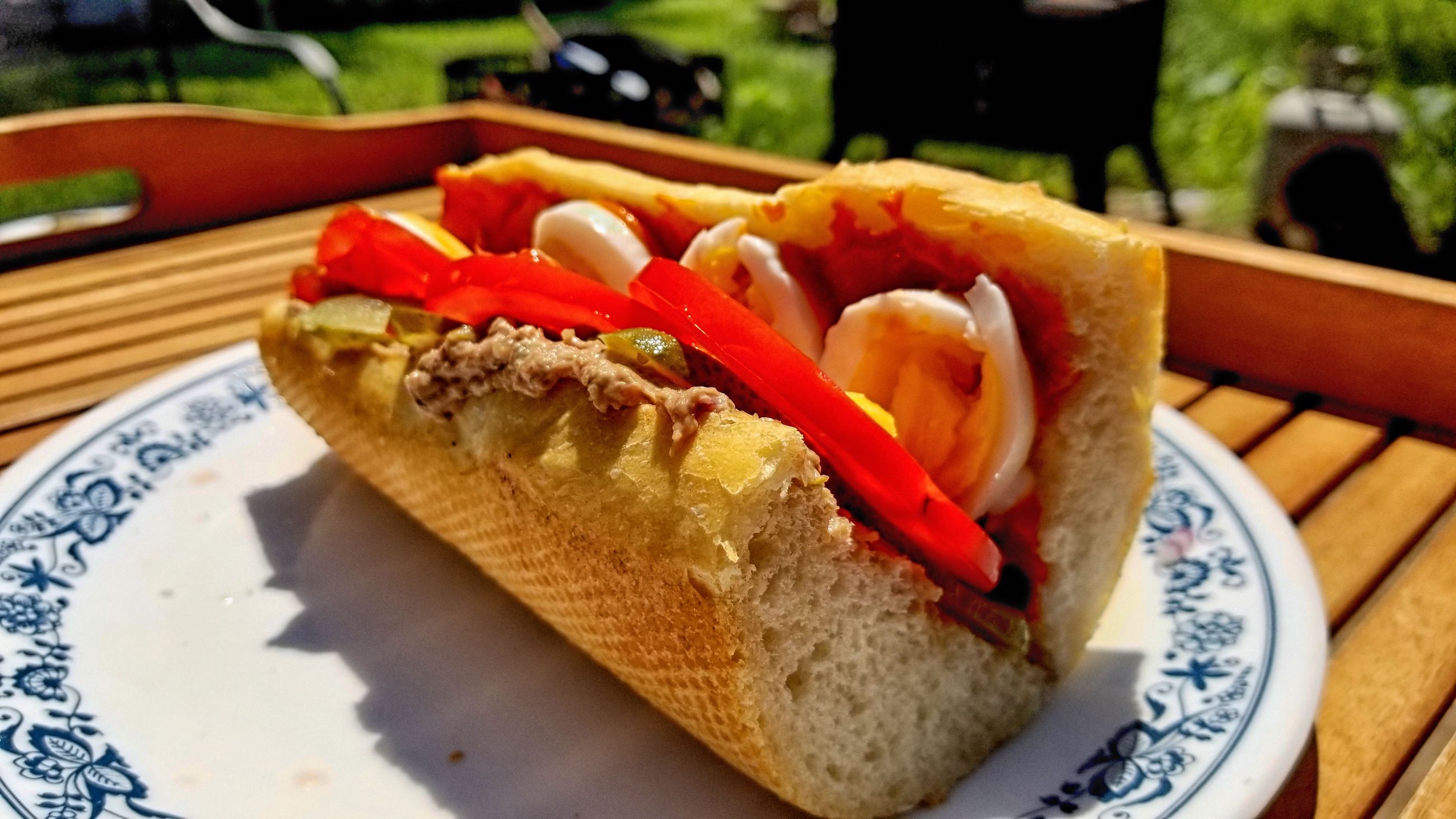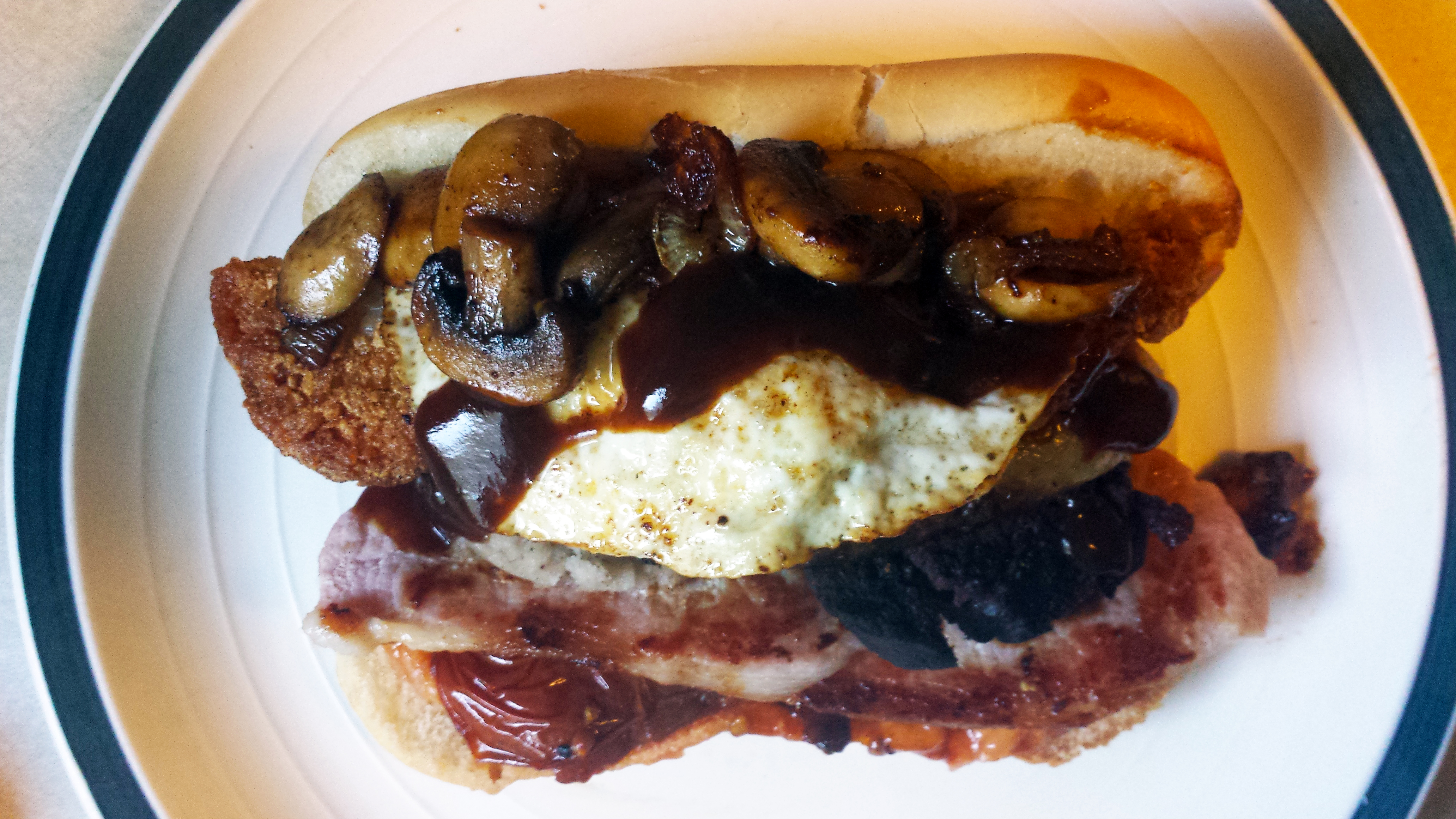Mutton Doin’: Kheema Pav
Kheema, or often keema, is a word for minced meat derived from Turkic languages. Variations of the word exists in Hindi, Punjabi, and Urdu, likely coming to those languages via the Persian qeema. At an Indian meat market recently, I bought minced goat that was labeled as mutton keema–the word seems to be commonly used simply to refer to minced meat. But Kheema also refers to a dish, or perhaps a collection of dishes, that feature minced meat as a central ingredient, served in a spicy and aromatic gravy, often with vegetables like peas or potatoes. Keema matar, or mince and peas, is one such dish; another is keema aloo, or mince and potatoes. Straightforward enough.
Kheema pav is yet another straightforwardly-titled South Asian minced meat dish. Keema, for mince, and pav, for a type of fluffy leavened hand-sized bread, similar to a dinner roll. In the typical kheema pav presentation, a saucy stew of minced meat–possibly with peas–is served garnished with onion, cilantro, lime, or any number of accompaniments, andwith a bread roll or two on the side to be torn open and used to scoop up the stew.

Pav
Pav was introduced to Goa by the Portuguese, who colonized the area in the 16th Century. The name pav is in fact derived from the Portuguese word for bread–pão–but is pronounced closer to “pow” with a bit of a v sound at the end. The Portuguese invaders demanded that their native cooks produce this leavened bread for them, and while flour made from locally grown wheat was plentiful, yeast leavening was not at the time. But the Goan cooks were able to leaven these early Pav rolls using a type of local palm wine called toddy. Eventually the rolls became part of the local cuisine, eaten by Indian and Portuguese alike. The Portuguese ruled Goa until late in the age of European Colonialism, and in fact after the end of the British Raj and India’s subsequent sovereignty. India finally invaded and annexed Goa as a state in 1961, ending Portuguese rule there.
But even before the Portuguese invasion, Goans were wandering types, and during the years of Portuguese rule many migrated away from their small territory on the southwest coast of India. Some of those Goan migrants made their way up the coast to Mumbai, where pav has become a staple of the street food scene in India’s most highly populated city. We’ve seen it used in vada pav here on the Tribunal, and in dabeli, and I’ve certainly mentioned pav bhaji a time or two, my favorite vegetarian Indian specialty. Pav is soft but springy, buttery, with a well-browned exterior, generally baked in a pan so that the sides eventually touch and force the dough to rise upwards to sometimes towering heights. They look much like a dinner roll, but are more substantial.
I have an Indian market near me that usually carries locally-baked pav, but for my kheema pav I decided to make my own. I used a recipe I found on Youtube, which made an ideal amount to fill a standard 9″x13″ pan.

The recipe calls for butter in the dough, a milk wash before baking to give that nicely browned top, and for brushing with butter at the end to give them that gleaming finish. These are terrific rolls.

Kheema
According to most sources, the minced meat dish known as kheema was first combined with pav at the Irani cafes of Mumbai. In the 19th Century, Zoroastrians from Persia migrated to then British-held Mumbai, joining a population of Zoroastrians who had fled Persia centuries earlier during the Muslim Conquest. These later migrants were called Iranis, as opposed to the earlier Zoroastrian refugees who are called Parsis. During the late 19th Century, the Zoroastrians of Mumbai began opening cafes, and some of these decades- or centuries-old Irani cafes still stand, tending toward old-fashioned decor and eclectic menus.
It was at these cafes that many say the minced meat stew kheema–which may owe as much to Persian Gheimeh as it does to the Mughlai dish Qeema Matar–was commonly paired with soft pav rolls to scoop it up. And perhaps fittingly for a dish with so many potential origins, there are many kinds of kheema, as I learned when I asked a few friends for recipes. My friend and colleague Shargeel, originally from Mumbai and a bit of a foodie, told me he sometimes makes a soupier version and sometimes makes a drier version depending on how he plans to serve the kheema. He pointed me to a recipe by a Youtube cook called Mrs. Vahchef, who he calls “the OG of OGs when it comes to bringing authentic Indian cooking to Youtube.”
My friend Das disagrees. He thought the Mrs. Vahchef recipe would be too runny, especially if I planned to make sandwiches from the kheema–which of course I did. Das also pointed out that there were looser, more liquid recipes and thicker, drier recipes, as well as a third type that he called “green” kheema. His idea of a good Mumbai-style kheema looked more like this, and he sent along a video recipe of a green mutton kheema as well, which was subtitled “Irani” kheema. That video spoke to me, but he didn’t think it was going to work for a sandwich kheema.
Eventually I decided to base my kheema off the Mrs. Vahchef recipe with a few changes–I added turmeric, which is omnipresent in most kheema recipes I’ve read, as well as some cilantro at the end, which is similarly ubiquitous. I threw in some chopped chilies with the onions near the beginning of the process, and I replaced the tomato puree with some chopped raw tomatoes and some tomato paste to help give a thicker, drier result.
This is the kheema I made, using the “mutton kheema” from the Indian meat market that I mentioned in the first paragraph. Mutton is a common meat for kheema, though I’ve seen recipes for kheema using chicken or even beef. This mutton kheema is quite good, though I think the spices are a bit restrained.

Kheema Pav Sandwiches
To make my kheema pav into a Sloppy Joe-like sandwich, I simply spooned it into a split-open and toasted pav roll and garnished it with a little diced onion and chopped cilantro.





Now I made the kheema dry enough that this goes past Sloppy Joe into almost Maid Rite territory, but it’s terrific, far more interestingly seasoned than a Midwestern loosemeat sandwich. with a whiplash of flavors between the cool herbs and warm spices that kept me interested without fatiguing my palate. The minced goat is a strong flavored meat but the relatively long cooking time and its absorption of what sauce did not evaporate made the meat especially tender, an adjective not always used with mutton or goat.
In researching the post, I ran across the work of Meherwan Irani, who runs several Indian restaurants in Asheville, NC, including a restaurant called Botiwalla that he modeled after the Irani Cafes of Mumbai. At his restaurant Chai Pani offering Indian street food, they serve a sandwich called Sloppy Jai, essentially this type of kheema pav-based Sloppy Joe, with Maggi brand ketchup, onions, cilantro, chilies and green chutney. Of course I had to try my own version of that as well.







This is even better. The sweetness of the Maggi ketchup is key, helping to accentuate some of the spices in the kheema. I should have made a fresh chutney rather than use the jarred stuff, but even that added its own flavor, elevating this version of the Sloppy Joe style kheema pav above a less-garnished version.
Of course, I have also simply been eating it out of a bowl, garnished with onion and cilantro and lime, perhaps with a yolky fried egg on top, scooping up the melange with a warmed but untoasted pav, and it’s as good a breakfast as I’ve had in months. I’m psyched to have plenty of the sauce and the rolls left over, and going into June–when as you know the Tribunal will be covering 3 new sandwiches–I’m glad to have my breakfasts covered for a while. If I ever make my way to Asheville, I hope to stop by one (or more) of Irani’s restaurants, but for now, this will have to do.

I like sandwiches.
I like a lot of other things too but sandwiches are pretty great
















Recent Comments